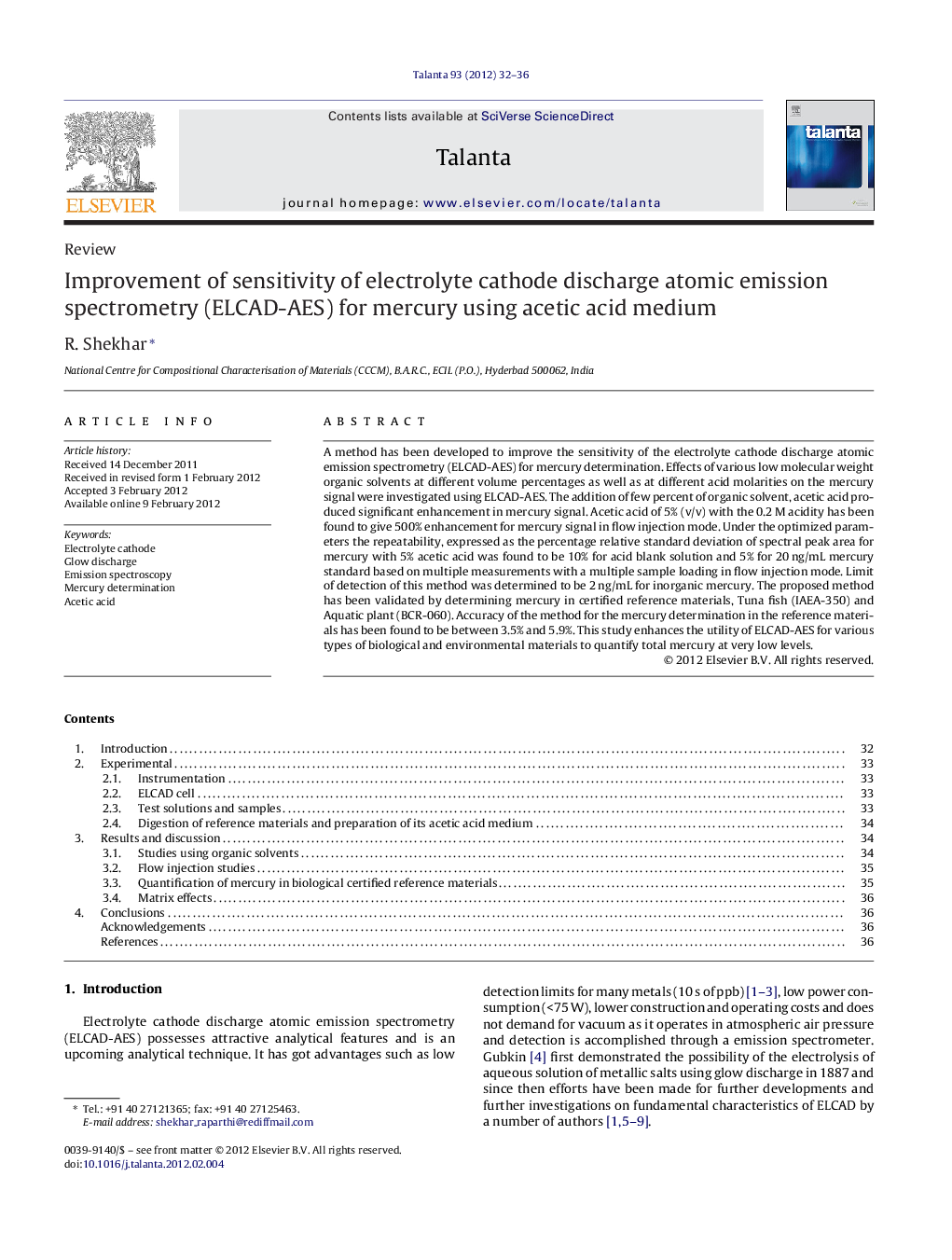| Article ID | Journal | Published Year | Pages | File Type |
|---|---|---|---|---|
| 7685498 | Talanta | 2012 | 5 Pages |
Abstract
A method has been developed to improve the sensitivity of the electrolyte cathode discharge atomic emission spectrometry (ELCAD-AES) for mercury determination. Effects of various low molecular weight organic solvents at different volume percentages as well as at different acid molarities on the mercury signal were investigated using ELCAD-AES. The addition of few percent of organic solvent, acetic acid produced significant enhancement in mercury signal. Acetic acid of 5% (v/v) with the 0.2Â M acidity has been found to give 500% enhancement for mercury signal in flow injection mode. Under the optimized parameters the repeatability, expressed as the percentage relative standard deviation of spectral peak area for mercury with 5% acetic acid was found to be 10% for acid blank solution and 5% for 20Â ng/mL mercury standard based on multiple measurements with a multiple sample loading in flow injection mode. Limit of detection of this method was determined to be 2Â ng/mL for inorganic mercury. The proposed method has been validated by determining mercury in certified reference materials, Tuna fish (IAEA-350) and Aquatic plant (BCR-060). Accuracy of the method for the mercury determination in the reference materials has been found to be between 3.5% and 5.9%. This study enhances the utility of ELCAD-AES for various types of biological and environmental materials to quantify total mercury at very low levels.
Related Topics
Physical Sciences and Engineering
Chemistry
Analytical Chemistry
Authors
R. Shekhar,
